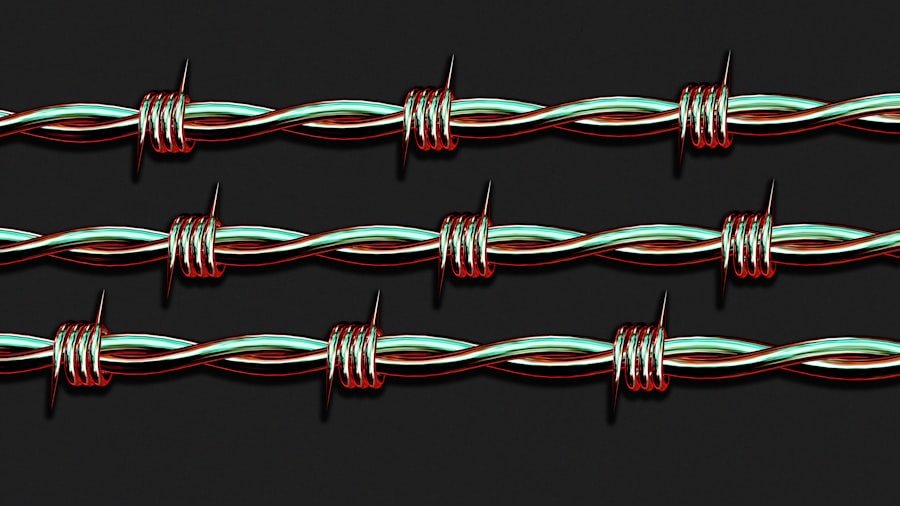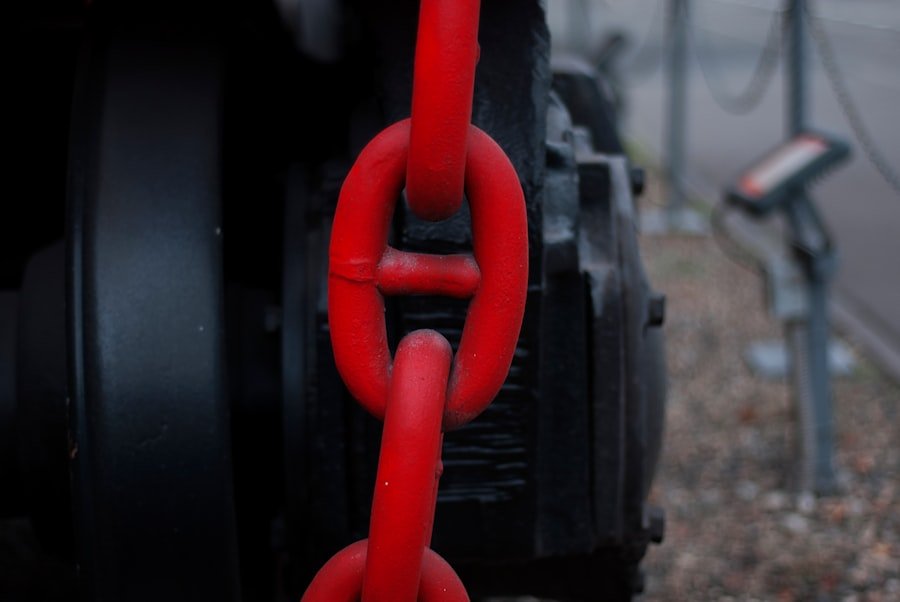Internal linking refers to the practice of hyperlinking one page of a website to another page within the same domain. This strategy is not merely a navigational tool; it plays a pivotal role in search engine optimization (SEO). By creating a web of interconnected content, internal links help search engines crawl and index your site more effectively.
They also guide users through your content, enhancing their experience and increasing the likelihood of conversions. The impact of internal linking on SEO cannot be overstated. Search engines like Google use complex algorithms to determine the relevance and authority of web pages.
Internal links serve as signals that indicate the importance of certain pages relative to others. When executed correctly, they can improve your site’s visibility in search results, driving organic traffic and ultimately boosting your bottom line. In essence, internal linking is a foundational element of a robust SEO strategy.
Key Takeaways
- Internal linking is the practice of linking one page of a website to another page within the same website, and it plays a crucial role in SEO by helping search engines understand the structure of a website and distributing page authority.
- Effective internal linking improves website navigation and user experience, making it easier for visitors to find relevant content and boosting engagement.
- Internal linking helps search engines crawl and index new content, as well as understand the context and relevance of different pages within a website.
- Implementing best practices for internal linking can have a significant impact on page authority and ranking, as well as promoting relevant content and boosting engagement.
- Anchor text in internal linking is important for SEO, as it provides context and relevance to the linked pages, helping search engines understand the relationship between different pages and their content.
The Role of Internal Linking in Website Navigation and User Experience
Effective website navigation is crucial for retaining visitors and reducing bounce rates. Internal links facilitate this by providing clear pathways for users to explore related content. When users can easily find what they are looking for, they are more likely to stay on your site longer, engage with your content, and convert into customers.
A well-structured internal linking strategy enhances user experience by making navigation intuitive and seamless. Moreover, internal links can help users discover content they may not have initially sought out. For instance, if a visitor reads a blog post about digital marketing strategies, an internal link to a related article on SEO best practices can pique their interest.
This not only keeps users engaged but also encourages them to explore more of your offerings, ultimately leading to higher engagement rates and increased brand loyalty.
How Internal Linking Helps Search Engines Understand the Structure of Your Website

Search engines rely on internal links to map out the structure of your website. Each link acts as a breadcrumb, guiding crawlers through your content hierarchy. A well-organized internal linking structure allows search engines to understand which pages are most important and how they relate to one another.
This understanding is crucial for effective indexing and ranking. For example, if you have a blog with multiple categories, internal links can help search engines identify the relationship between category pages and individual posts. By linking from category pages to relevant articles, you signal to search engines that these articles are part of a broader topic.
This not only aids in indexing but also enhances the chances of your content appearing in relevant search queries.
The Impact of Internal Linking on Page Authority and Ranking
Page authority is a critical factor in determining how well a page ranks in search engine results. Internal linking can significantly influence this metric by distributing authority throughout your site. When a high-authority page links to another page, it passes some of its authority to that linked page.
This transfer can elevate the ranking potential of the linked page, making it more likely to appear in search results. Consider an e-commerce site with a high-traffic product page.
Over time, this strategy can lead to improved rankings for multiple pages across your site, creating a ripple effect that boosts overall visibility and traffic.
Best Practices for Implementing Internal Linking Strategies
To maximize the benefits of internal linking, it’s essential to adopt best practices that align with SEO principles. First, ensure that your internal links are relevant and contextually appropriate. Links should naturally fit within the content and provide value to the reader.
Avoid excessive linking; instead, focus on quality over quantity. Another best practice is to use descriptive anchor text that clearly indicates what the linked page is about. This not only aids user experience but also provides search engines with context about the linked content.
Additionally, regularly audit your internal links to identify broken links or outdated content that may need updating or removal. A well-maintained internal linking structure is vital for sustaining SEO performance.
Internal Linking as a Tool for Promoting Relevant Content and Boosting Engagement

Internal linking serves as an effective tool for promoting relevant content across your website. By strategically linking to related articles or products, you can guide users toward additional resources that enhance their understanding or interest in a topic. This not only keeps users engaged but also encourages them to explore more of your offerings.
For instance, if a user reads an article about social media marketing strategies, an internal link to a case study showcasing successful implementation can provide valuable insights. This approach not only enriches the user experience but also positions your brand as a knowledgeable authority in your field.
The Relationship Between Internal Linking and Site Architecture
Site architecture refers to how content is organized and structured within a website. A well-thought-out architecture enhances both user experience and SEO performance. Internal linking plays a crucial role in establishing this architecture by connecting related content and creating a logical flow throughout the site.
A flat site architecture—where important pages are just a few clicks away from the homepage—can be particularly beneficial for both users and search engines. Internal links help maintain this flat structure by connecting key pages directly to one another, reducing the number of clicks needed to access important content. This not only improves navigation but also ensures that search engines can easily crawl and index all relevant pages.
Internal Linking and the Distribution of Page Authority Throughout Your Website
The distribution of page authority is essential for optimizing your website’s overall performance in search engine rankings. Internal linking facilitates this distribution by allowing high-authority pages to pass their value onto lower-authority pages through strategic links. This process helps elevate the visibility of less prominent pages that may otherwise struggle to gain traction.
For example, if you have a cornerstone piece of content that ranks well, linking it to several related articles can help those articles gain authority over time. This interconnectedness creates a network of valuable content that enhances your site’s overall SEO profile, making it more competitive in search engine results.
The Importance of Anchor Text in Internal Linking for SEO
Anchor text—the clickable text in a hyperlink—plays a significant role in internal linking strategies for SEO. It provides context about the linked page’s content, helping both users and search engines understand what to expect when they click on the link. Using descriptive anchor text can improve user experience by setting clear expectations while also signaling relevance to search engines.
For instance, instead of using generic phrases like “click here,” opt for specific phrases that describe the linked content, such as “learn more about our digital marketing services.” This approach not only enhances clarity but also improves keyword relevance, potentially boosting the linked page’s ranking for those keywords.
How Internal Linking Can Help Search Engines Discover and Index New Content
When you publish new content on your website, internal linking can significantly aid in its discovery and indexing by search engines. By linking from existing pages to new content, you create pathways for search engine crawlers to find and index that content quickly. This is particularly important for maintaining an up-to-date site that reflects current offerings or insights.
For example, if you launch a new product line, linking from relevant blog posts or category pages can help search engines recognize this new content as part of your overall site structure. The faster search engines index this new information, the sooner it can appear in search results—ultimately driving traffic and potential conversions.
The Role of Internal Linking in Building a Strong SEO Foundation for Your Website
In conclusion, internal linking is not just an ancillary aspect of SEO; it is foundational to building a robust online presence. By enhancing navigation, improving user experience, distributing page authority, and aiding in content discovery, internal links create a cohesive ecosystem that supports both users and search engines alike. As you refine your internal linking strategy, remember that every link should serve a purpose—whether it’s guiding users toward valuable resources or signaling relevance to search engines.
By prioritizing thoughtful internal linking practices, you position your website for sustained growth and visibility in an increasingly competitive digital landscape. In an era where digital presence is paramount, mastering internal linking could be the differentiator that elevates your brand above the competition. Embrace this powerful tool as part of your comprehensive SEO strategy and watch as it transforms not just your rankings but also your overall online engagement and success.
Internal linking is a crucial aspect of SEO that helps search engines understand the structure of your website and improves user navigation. By strategically linking related content, you can enhance the authority of your pages and boost their visibility in search engine results. For businesses looking to optimize their online presence, it’s essential to consider various strategies that complement internal linking. One such strategy is maximizing your social media impact, which can drive traffic and engagement to your site. To learn more about how to effectively leverage social media alongside your SEO efforts, check out this related article: Maximize Your Social Media Impact.
FAQs
What is internal linking?
Internal linking is the practice of linking one page of a website to another page within the same website. These links help users navigate the website and also help search engines understand the structure and hierarchy of the site.
How does internal linking impact SEO?
Internal linking is important for SEO because it helps search engines discover and index new pages on a website. It also helps search engines understand the relevance and relationship between different pages, which can improve the website’s overall search engine rankings.
What are the benefits of internal linking for SEO?
Internal linking can help distribute page authority and ranking power throughout the website, improve user experience by guiding visitors to relevant content, and increase the time visitors spend on the website. It can also help search engines crawl and index more pages on the site.
What are some best practices for internal linking?
Some best practices for internal linking include using descriptive anchor text, linking to relevant and related content, and avoiding excessive linking, which can be seen as spammy by search engines. It’s also important to regularly audit and update internal links as the website’s content evolves.
How can I improve internal linking on my website?
To improve internal linking on a website, you can start by conducting a thorough audit of existing internal links and identifying opportunities to add new links to relevant pages. You can also create a sitemap to help search engines crawl and index the website more effectively.



